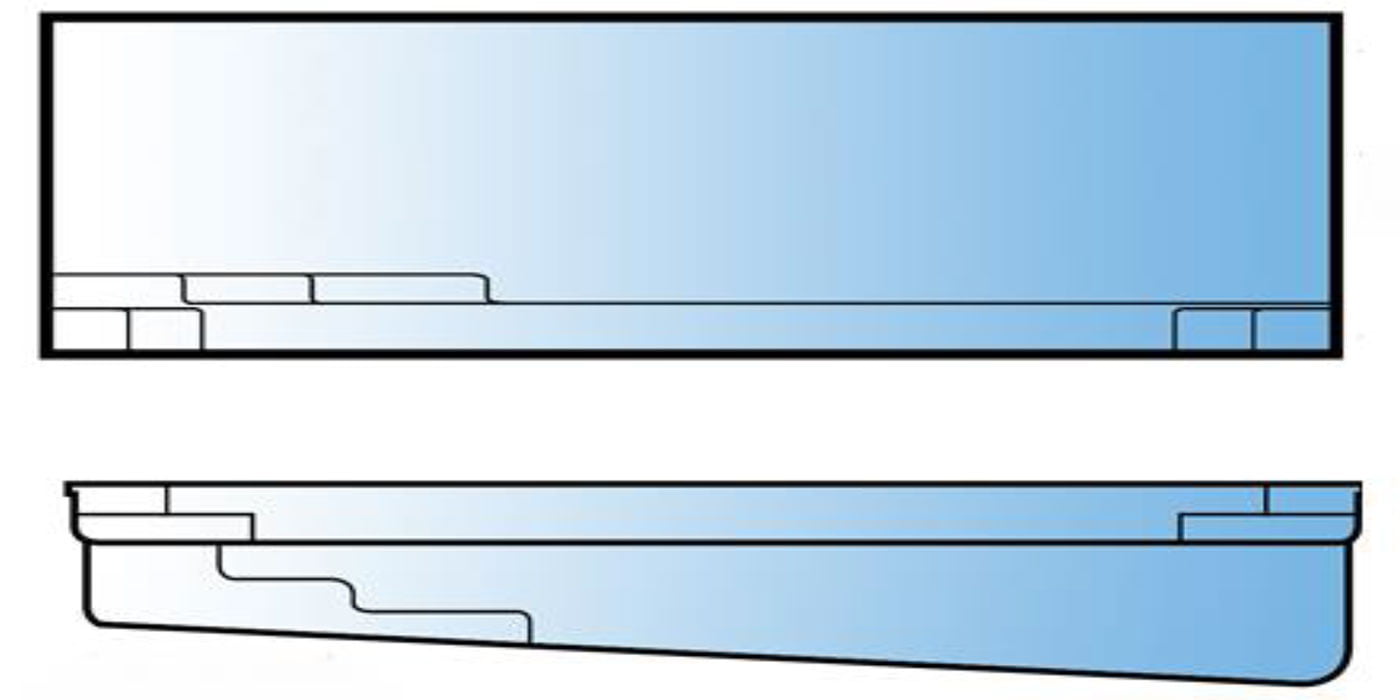Fiberglass Pool Removal Step by Step Process
Ready to remove your fiberglass pool? Follow this expert guide to ensure every step—from breaking down the shell to final cleanup—is handled with care.
- Acquire the necessary permits from the local municipality governing the area where the pool is to be removed.
- Call Miss Utility as per the local laws. Make sure it is to cover all areas of disturbance within the limits of disturbance.
- Determine egress into the property.
- Lay protection for the lawns by using Track Protection Devices. This will minimize the disturbance of the soils and will eliminate or reduce the square footage of disturbance.
- Remove any landscape or fencing to gain access to work area.
- Install silt fence on the lower side of the property only when the slope is greater than 15%.
- Drain or pump out any water that may remain in the shell of the pool. All water is to be collect and disposed offsite in strict accordance to local regulations.
- Break and remove the bottom of the pool and disposed of properly with the local recycling program.
- Removal of all pool accessories. This includes ladders, diving boards, lights, covers, and etc. all to be disposed of properly with the local recycling program.
- Removal of Pumps, Heaters, Filters, UV lights etc. and dispose of properly with the local recycling program.DO NOT LEAVE ANY WIRES HOT. All electricity to the equipment needs to be turned off at the breaker. Any exposed wires from the junction boxes will either need to be terminated by a licensed electrician or install a wire nut on all wires and wrap each point with electrical tape for an electrician to properly terminate that point of connection at a later point of time.
- DO NOT REMOVE METAL FRAME UNTIL YOU RECEIVED YOUR INSPECTION APPROVAL. Removal of the frame at this point will remove any integrity of the soils and create a very unsafe environment.
- Call in for inspection.
- Take pictures.
- Removal of metal framed sides and dead-men under the decking. Make sure to remove any skimmers, PVC piping, Lights, Jets, etc. and dispose of properly with the local recycling program.
- Some local municipalities require a minimum depth of 36” of aggregate fill. If there is not enough of the existing aggregate to fill to this point. Recycled aggregate fill will need to be brought in to achieve this depth. Recycled concrete #2 stone.
- Take pictures.
- Layer of filter cloth covering entire aggregate plus some extra around all sides for movement when soil is added.
- Add fill dirt up to close to final grade as possible.
- Compact the fill-dirt in 6-8” lifts to prevent settling of soils.
- Take pictures.
- Final covering of soil is to be an enriched screened topsoil (amended with 25% organic matter), viable as a planting medium.
- DO NOT COMPACT THE FINAL several inches of soil to the rating denoted previously. Compacted soils restrict grass seed growth and do not allow for the soils maximum water holding capacity.
- Seed area using a standard contractor blend of seed at a rate of approximately 12 pounds per 1,000 square feet. Used the contractor blend that is common to your hardiness zone.
- Take pictures showing the seed.
- Lightly rate in the seed to lightly cultivate the seed into the soils. Cover entire area with straw. Approximately 5 bales of straw per 1,000 sf.
- Repair the egress into the property to restore lawns.
- Take pictures.
- Repair access point to work area as needed.
- Removal of silt fence.
- Call in for Final Inspection.
- Take pictures.
- Prepare photo journal of all photos taken during construction for the owners records. These photos may have to be archived with the local tax authority as authentication that the pool structure was in fact removed.
- At the end of each day, we will limit pedestrian foot traffic from entering the work area by using OSHA approved pedestrian safety devices. ( Orange poly fencing) If and when the crew leaves for the day or a prolonged period of time, this pedestrian safety device will need to be in place.












